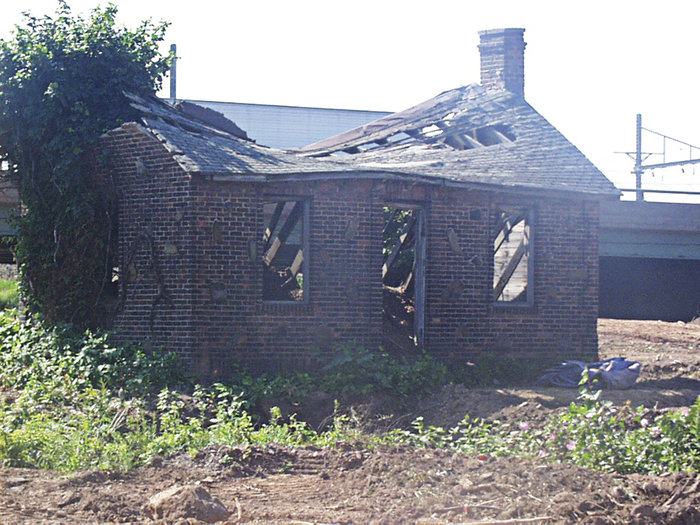A confrontation at the July 11 Hudson County Board of Freeholders meeting between representatives of the New Jersey Turnpike Authority and the county freeholders has resurrected a longstanding controversy over a portion of land under the access ramps to Interchange 15X in Secaucus. That land once included a Hudson County pauper’s grave, but nearly 5,000 people’s remains had to be moved between 2001 and 2006 when the Turnpike built the ramps.
The ramps, completed at the very end of 2005, allow access to the Secaucus Junction train station. They were built on land that for decades was a potter’s field used by the county, which also had several institutions there, including a psychiatric asylum.
The site remains controversial because the Turnpike Authority, which wants title to the site to complete the project, still hasn’t paid Hudson County for the land, according to the freeholders. All the work is done, but the Authority wants the title to the land on which the roadway is built. In exchange, they are hoping to give the county what county officials say is less valuable land. Freeholder Bill O’Dea said the county would actually end up losing money if they take the deal.
“As far as I’m concerned, let it stay the way it is,” O’Dea said at the July 11 meeting. “What are they going to do, move the roadway? They can’t.”
The property is among three parcels the Turnpike Authority proposed to swap. In 2010, the freeholders voted against one property swap because the county would have lost about $70,000 on the deal.
“As far as I’m concerned, let it stay the way it is.” – Bill O’Dea
____________
Turnpike officials said they originally estimated the site contained about 500 remains to build the interchange, but that turned out to be nearly 5,000, all of which had to be relocated to a graveyard in North Bergen.
Robert Grimm, an engineer for the Turnpike, said the project cost about $5 million. This was in addition to the $5.5 million the Turnpike Authority paid Hudson County for property in the area.
A long history unresolved
The controversy exhumes a somewhat notorious chapter in Hudson County history.
According to Secaucus town historian Dan McDonough, the history of the graveyard may have begun when Old Bergen County, which now comprises modern Passaic and Bergen counties, acquired 200 acres in the late 1700s for a poor farm.
In 1845, the new county of Hudson took on the site for its own poor house. But only after about 10 years of bickering did it do anything with the land, setting up county institutions on the spot. These included a new and old almshouse, a county jail, a lunatic asylum, Hudson County General Hospital, a tuberculosis hospital, a boys camp, Catholic and Protestant churches, a unit of the Hudson County Fire Department, and storage buildings for supplies and equipment.
The cemetery the Authority uncovered could date back to 1845 when the county set up its poor house.
A report about the site done for the Authority in 1999 said the land had been a burial ground for the poor and for Hudson County workers employed at a county prison, senior citizen building, and mental hospital at Laurel Hill from just after the Civil War until about 1962, when county health operations were moved to the Meadowview campus on County Avenue in Secaucus.
Jerry Colangiovanni, public information officer for the Turnpike Authority at the time, said the authority originally constructed a bridge over the graveyard when the roadway was constructed in the early 1950s.
Decades later, in 2001, when engineers started studies for a new $225 million exit to access the Secaucus Rail Transfer Station, Turnpike officials stumbled over the human remains.
Work ceased and a firm was hired to investigate and get background on people buried there. Identifying the remains became a problem because the graves were numbered and the record books containing the names could not be immediately found.
The area actually contained three burial sites, but apparently only one was disturbed during construction. Research later uncovered three leather-bound books containing the names of 9,000 people buried in the Laurel Hill area from throughout Hudson County. The books were in storage in the basement of the Meadowlands campus and had been largely forgotten.
But while the volumes listed names and marker numbers of graves, lack of upkeep of the graveyard made it impossible to tell which grave contained which remains. Some graves contained up to three remains each.
Those remains moved to a cemetery in North Bergen are remembered with a monument wall, authority officials said.
Al Sullivan may be reached at asullivan@hudsonreporter.com.
